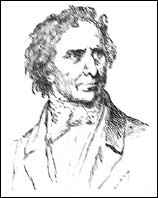Wonders in the Sky (69 page)
Read Wonders in the Sky Online
Authors: Jacques Vallee
397.
Ca. 1820, Hopkinton, New Hampshire, USA
Close encounter
At dusk a young man was followed home in a patch of forest called “The Lookout” near Putney Hill (also known as Gould Hill) for almost two miles by several glowing balls. They would stop whenever he stopped to look back at them, and then resume their movement as he started walking again, but never came closer than within 50 feet.
Such glowing balls had been seen in the area since 1750, moving slowly in mid-air, so one may suspect a natural phenomenon. The date given here is a rough estimate.
Â
Source: Charles Chase Lord,
Life and Times in Hopkinton, N.H
. (Concord, NH: Republican Press Association, 1970).
398.
12 February 1820, Augsburg, Germany
Trans-solar traveler
A circular well-defined spot, with an orange-gold tint, not seen again the same evening, is recorded to have been seen by two independent observers, viz. Stark and Steinhübel. It crossed the sun in about 5 hours.
Â
Source: R. C. Carrington, “On some previous observations of supposed planetary bodies in transit over the Sun,”
Monthly Notices of the Royal Astronomical Society
20 (March 1860): 192-4.
399.
27 May 1820, Spello (Perugia), Umbria, Italy
Unknown stars in a moving triangle
Half an hour before sunset, while Saint Caspar (San Gaspare Del Bufalo) was preaching in the public square, people saw a cross of three stars in the sky to the east. It came over of the head of the Servant of God and formed a triangle, “one (light) was up and the two side ones at a lower level”. Before this unusual phenomenon the people remained stunned; many fell into deep commotion and even the Bishop, Monsignor Lucchesi, who was present, “was astonished and amazed”.
Some doubts can be expressed about the event. The correspondence of Gaspare has been published yet the event is mentioned nowhere in his letters, even though we have letters dated from multiple dates in May 1820. He sent two letters to his hierarchy on the 27th on the 28th of May, 1820, neither of which letters mention such an event.
Â
Source: Biography of Saint Caspar (1786-1837). Despite featuring in UFO archives we have yet to trace a source, though some reference to the event appears here:
Gaspar Del Bufalo, A close-up acquaintanceship.
Depositions of V. Severini, G. Menicucci, B. Panzini at the processes for the canonization of St. Gaspar Del Bufalo (Rome: Pia Unione Preziosissimo Sangue, 1992), 49.
400.
7 September 1820, Embrun, France
Arago's unknown formation: Military precision
Astronomer François Arago, director of Paris observatory, reports that “numerous people have seen, during an eclipse of the moon, strange objects moving in straight lines.
They were equally spaced and remained in line when they made turns. Their movements showed military precision.”
Â
Source: François Arago,
Oeuvres Complètes de François Arago
(Paris, 1857), v. 11, 575-8; “Etoiles filantes en plein jour”, in
Annales de Chimie et de Physique
, vol. 30 (1825): 575-8.

Fig. 35: French astronomer François Arago (1786-1853)
401.
13 February 1821, Paris, France: Luminous globe
People leaving a theatre observed a luminous globe in the air, which did not vanish until daybreak. The translator notes sceptically that this comes from “a French publication, as an example of the superstitious opinions which even in our times prevail to a considerable degree, in an otherwise enlightened country.”
Â
Source:
Adams Sentinel
(Gettysburg, Pennsylvania), May 2nd 1821.
402.
23 October 1822, Buchholz, Germany: Two objects
Astronomer Pastorff sees two round spots passing in front of the Sun.
Â
Source: “New Planets,”
Annual of Scientific Discovery
(1860): 409-11, at 411.
403.
5 December 1822, Aberdeen, Scotland
Globular intruder
“Soon after six o'clock, a most extraordinary meteor was observed, almost due north from Aberdeen. When first seen, it had the appearance of a large ball of the moon's diameter; but descending towards the horizon, it formed the shape and appearance of a luminous fiery pillar; soon after which it ascended, and assumed its original globular form â again descended a little, and began to extend itself as before, when it suddenly vanished.”
Â
Source:
The Edinburgh Advertiser
, 10 December 1822.
404.